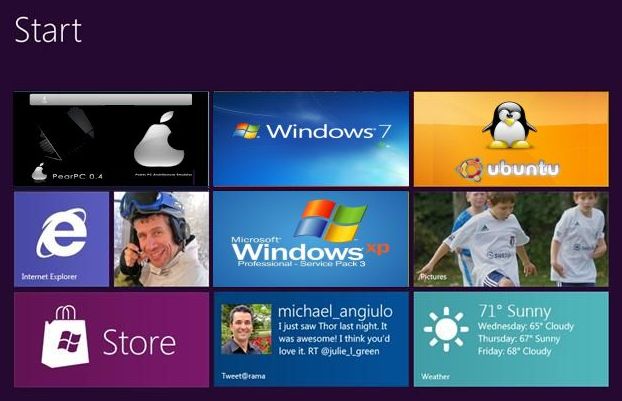Samsung is said to be building and developing a tablet that it is optimised to run Windows 8, according to a report in the Korea Economic Daily.
The publication cites an unnamed industry source for its information, and adds that the tablet will make an appearance at Microsoft’s BUILD conference in Anaheim, California, which is scheduled to kick off 13 September.
Microsoft already plans to show off some aspects of Windows 8 at the conference.
Windows 8 Hype
Rumours have circulated for some time that Microsoft plans on offering BUILD attendees a quad-core tablet loaded with a test build of Windows 8. This newest report adds some credence to that scuttlebutt.
 Although Windows 8 will most likely appear sometime in 2012, Microsoft is already ramping up marketing and outreach for the next-generation operating system. For weeks, the company has offered glimpses of the developing features and user interface via its official “Building Windows 8” blog.
Although Windows 8 will most likely appear sometime in 2012, Microsoft is already ramping up marketing and outreach for the next-generation operating system. For weeks, the company has offered glimpses of the developing features and user interface via its official “Building Windows 8” blog.
Windows 8 will offer a touch-centric environment for tablets, coexisting peacefully with a desktop interface. The seamless ability to switch between the two, Microsoft hopes, will allow Windows to maintain its longtime dominance of the traditional operating-system market, while making inroads into tablets.
Windows 8 features include USB 3.0 support and the ability to run multiple virtualised operating systems on the same physical machine. Microsoft is also using the blog to counteract early criticism. Windows and Windows Live Division President Steven Sinofsky used a 2 September posting to defend the choice of an updated “ribbon” interface for Windows 8’s version of Windows Explorer.
Interface Defence
“We chose the ribbon mechanism, and to those that find that a flawed choice, there isn’t much we can do other than disagree,” Sinofsky wrote. “We were certain, and this proved out, that the dislike of the ribbon is most intense in the audience of this blog.”
He also defended the choice of “Metro” style for Windows 8’s overall look as an opportunity to embrace the new. “We’ve seen a clear turn where Aero is the past and Metro is the future,” he added. “And with that a strong desire for the existing Windows experience to take on a new look or a Metro redesign.” The “Aero” aesthetic informed the look of both Windows Vista and Windows 7, and emphasised design elements such as translucent panels.





